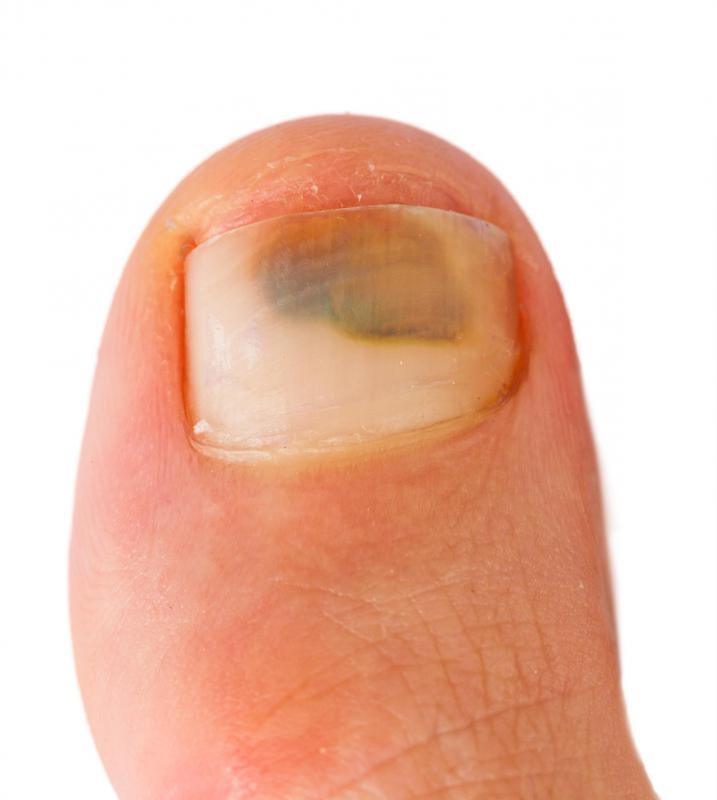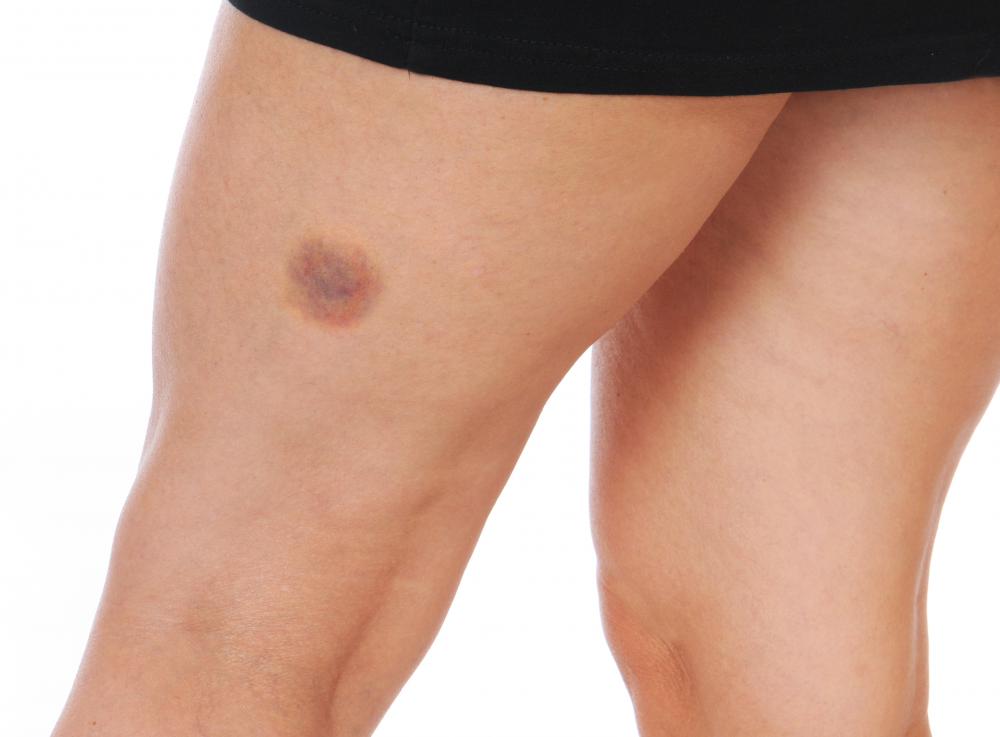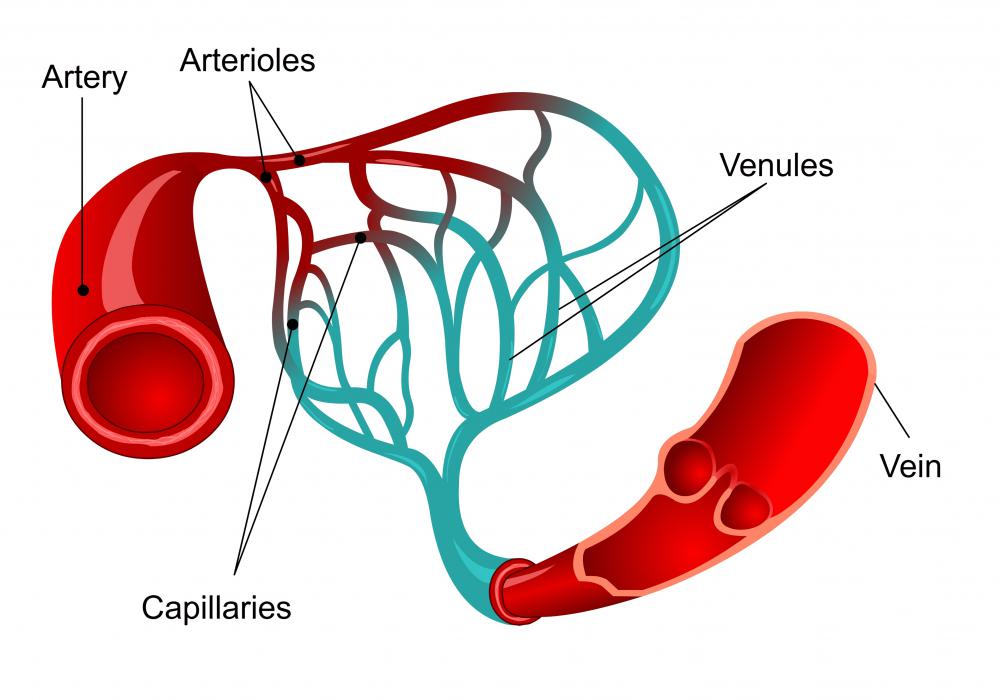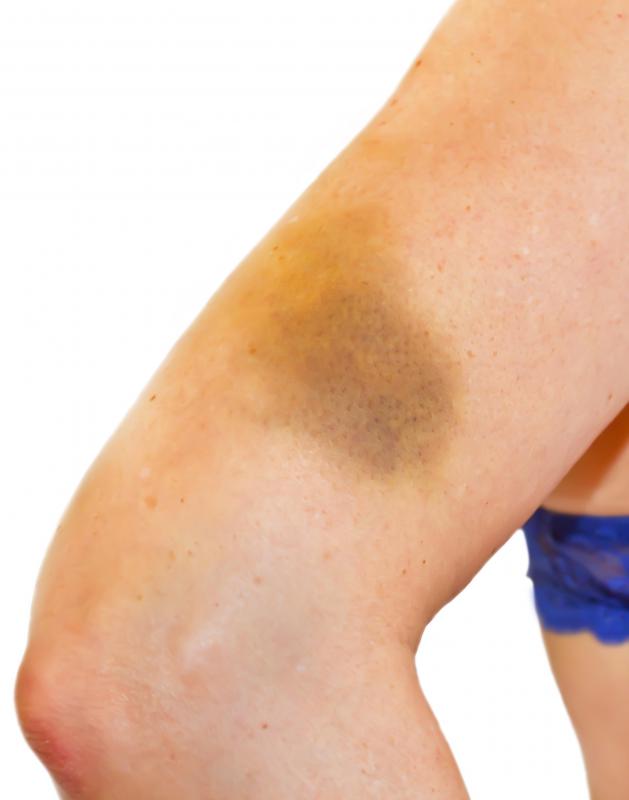At WiseGEEK, we're committed to delivering accurate, trustworthy information. Our expert-authored content is rigorously fact-checked and sourced from credible authorities. Discover how we uphold the highest standards in providing you with reliable knowledge.
What Is the Connection between Bruises and Blood?
Bruises, also commonly called hematomas or contusions, are typically caused by broken blood vessels. When the body is injured, the skin does not always break, but the muscle and tissues beneath the skin can still be damaged. Small capillaries and veins may rupture, allowing blood to pool in the area. Some conditions may also lead to bleeding that causes bruises without any type of injury. Most types of mild bleeding under the skin are what cause the discoloration known as a bruise.
There are three general types of bruises: subcutaneous, intramuscular, and bone or periosteal. Subcutaneous bruises are bruises just below the skin and are usually caused by bumps or minor injuries. In the case of intramuscular bruises, the bruises and blood are within the muscle itself. With these bruises, the original injury is usually severe enough that it also causes skin bruising, but those surface bruises may heal much faster than the muscle injury. Muscle bruises can remain long after the visible skin bruises have faded.

The third type of bruise, a bone or periosteal bruise, is typically the most painful kind. In this case, the bruises and blood are within the bone itself. These are generally deep bruises that sometimes are misdiagnosed as bone fractures. Periosteal bruises and blood that pools in the bone tissue typically last far longer than skin or muscle bruising.

Most visible bruises start out pink or red, and may get darker after a day or two. The initial pink or red color is the red blood showing through the skin. As the blood ages beneath the skin, it starts to break down and turns darker, changing the bruise from red to shades of purple or black. Aging bruises may take on a green or yellow cast as they fade, as the remnants of blood under the skin break down even more. Eventually, the body's tissues reabsorb the blood, and the bruise usually fades in a matter of days.

In most cases, bruises and blood under the skin are not serious and will typically resolve on their own. People who bleed easily, such as hemophiliacs or people on blood thinning medications, may have to watch carefully for bruising as a sign of internal bleeding that can become serious. If unexplained bruises and blood pooling beneath the skin appear, it could be a sign of a reaction to a medication or a medical condition that might require treatment. In most cases, however, a bruise is simply a sign of a mild bump or injury that will generally fade within one to two weeks as the body reabsorbs the blood.
AS FEATURED ON:
AS FEATURED ON:
















Discuss this Article
Post your comments